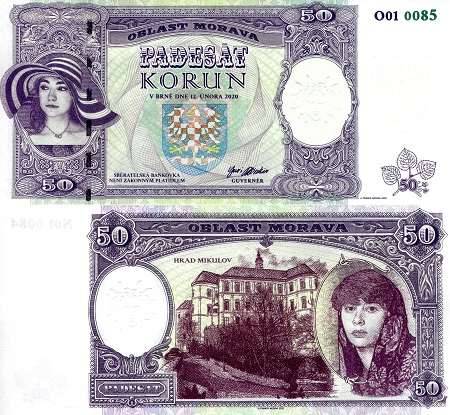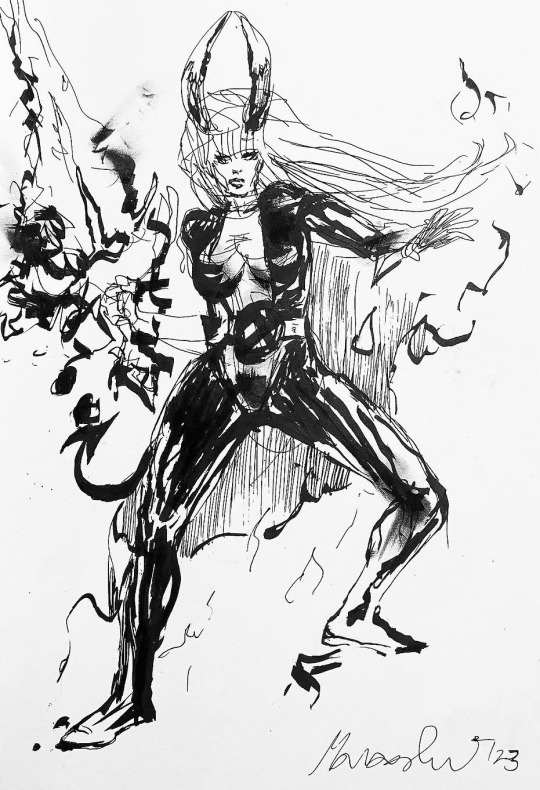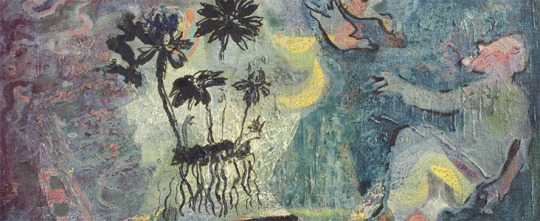#Morawsky
Explore tagged Tumblr posts
Quote
The activities performed in the sector of CIs originate from an individual creativity of talented and competent workers. Creativity like any other mental work requires intellectual engagement, reflection concentration, creative passion, and personal interest. At the same it is the process of crossing some designated borders, questioning and overthrowing accepted and universally applicable principles or rules, defining problems, and the reality in different ways. This means a violation of certain taboos, breaking the stereotypes, repudiation of allegiance to some theses applied in popular consciousness.
(Morawsky, 2017)
2 notes
·
View notes
Text


Marius Morawski | Finnish National Ballet
151 notes
·
View notes
Photo

Max Morawski
https://chesterartsfair.co.uk/portfolio-item/max-morawski/
102 notes
·
View notes
Text
Zawodowiec. Andrzej takich lubi
Znajomy, może nawet kolega Andrzeja Dudy, aktor Bartłomiej Morawski, z którym to Duda chętnie się fotografował dając mu w ten sposób poparcie, kiedy ów Morawski startował w wyborach, w barwach PiS oczywiście (jakiś czas temu o tym pisaliśmy), dostał właśnie wyrok 5 lat odsiadki. I żeby było jasne, wcale nie za przynależność przynajmniej ideową do PiS, bo za to niestety jeszcze sądy nie skazują,…

View On WordPress
0 notes
Text


Fancy local banknotes of Morava / Czech rep.
#morawy#Morava#moravian#morawskie#banknote#banknot#fantasy#fantazyjny#kolekcjonerski#for collectors#not circulated#nieobiegowy#fancy#note#castles#zamki#lady#woman#kobieta#korun#korony
0 notes
Text
youtube
Eugeniusz Morawski (1876-1948) - Nevermore (symphonic poem), 1911
Performed by Brandenburg State Orchestra, under the baton of Jürgen Bruns.
1 note
·
View note
Text
youtube
Wrocław – miasto myśli. Studiuj w Instytucie Filozofii UWr (2023)
A commercial for the Philosphy studies on University of Wrocław. Combined techniques of simple screened digital animation and raw video footage.
Camera, editing, post-production and music by Jakub Majchrzak. Concept by Jakub Majchrzak and Emilia Konwerska. Voices by Karol Morawski and Urszula Lisowska.
#commercial#commercials#uniwersytet wrocławski#university of wroclaw#wydział nauk społecznych#karol morawski#urszula lisowska#jakub majchrzak#emilia konwerska#philosophy
0 notes
Text

Lech Morawski | from the Partitions series | 1981-1984
9 notes
·
View notes
Text

The Kiss, by piotr morawski
75 notes
·
View notes
Text

Wojciech Morawski
16 notes
·
View notes
Photo

EILEEN AGAR & HALINA POSWIATOWSKA
No es verdad que la nostalgia sepa callar. Susurro-Susurro-Susurro- de verdad oigo la nostalgia temblar, pulsación en la boca y después Hoja-Hoja- jirones del frio vivo un poco de nada, hasta el fondo de la nada, la tristeza partida en dos, en cuatro y más y más, finalmente, un ovillo amasado por mucho tiempo en las manos calientes. La nostalgia no anhela comprender nada, ya que ha crecido por encima de su anhelo. O incluso por encima de las Estrellas, Estrellas…
Únicamente acaríciame, correspondencia entre la poeta Halina Poświatowska y el escritor Ireneusz Morawski
Bernard Shaw Feeding the Birds / Eileen Agar / 1934
8 notes
·
View notes
Text




























35) Austria (CD)
1. Średniowieczny sztandar Marchii Austriackiej (Dom Babenbergów) (976–1136)
2. Flaga Arcyksięcia Austriackiego (1453–1804)
3. Flaga Arcyksięcia Austriackiego. Żółte pole z czarnym dwugłowym orłem z koroną na szczycie i trójkolorowym herbem Austrii na piersi (1685–1740)
4. Flaga handlowa Arcyksięcia Austriackiego (1749–1786)
5. Flaga Cesarstwa Austriackiego. Flaga monarchii Habsburgów, a także flaga Cesarstwa Austriackiego; z austro-węgierskiego kompromisu z 1867 r., flaga Austrii Przedlitańskiej. Czasami używana jako nieoficjalna flaga narodowa Austro-Węgier (1804–1918)
6. Niewdrożona chorągiew marynarki wojennej (1869–1918)
7. Chorągiew kupiecka Austro-Węgier (1869–1918)
8. Flaga państwowa kraju związkowego Austria. Jest to flaga państwowa Austrii przyjęta w 1934 roku i używana do czasu przyłączenia Austrii do Niemiec w latach 1938–1945. Flaga ta była używana w okresie rządów jednopartyjnego państwa Frontu Ojczyźnianego (1934–1938)
9. Flaga Rzeszy Niemieckiej/Wielkiej Rzeszy Niemieckiej (1938–1945)
10. Królestwo Czech
11. Księstwo Bukowiny
12. Księstwo Karyntii
13. Księstwo Krainy
14. Królestwo Dalmacji
15. Królestwo Galicji i Lodomerii (1772–1800; 1849–90)
16. Królestwo Galicji i Lodomerii (1890–1918)
17. Wybrzeże Austriackie
18. Książęcy okręg Gorizia i Gradisca
19. Cesarskie Wolne Miasto Triest
20. Austro-węgierskie panowanie w Bośni i Hercegowinie
21. Margrabstwo Morawskie
22. Księstwo Salzburga
23. Śląsk Austriacki
24. Księstwo Styrii
25. Okręg Tyrol
26. Królestwo Węgier
27. Królestwo Chorwacji-Slawonii
28. Corpus separatum [Ciało rozdzielone] (Fiume)
0 notes
Photo

Max Morawski
Title: Artefact ACX-2
About the Photo:
Our minds respond to visual stimuli in complex, not fully understood ways. Here I show how the mesmerising, dynamic shape formed by the lines of ACX-2 gives it nonfigurative, symbolic qualities.
Scientists say that abstract art activates our entire brains and enables a holistic cognitive state. We become exploratory, tap into our brains’ inner power, and start to see life with clarity. I hope we can carry such lateral thinking into our lives. It may help us regain balance and escape the shackles of immediate, everyday concerns.
53 notes
·
View notes
Text
youtube
Art Won't Save Us from Capitalism This video is already out on Nebula. Watch here: https://ift.tt/orpMEjz Listen to Lola Sebastian's new podcast Nevergreen: https://ift.tt/LZzgs34 "The victim who is able to articulate the situation of the victim has ceased to be a victim: he or she has become a threat." —James Baldwin - Support the channel on Patreon: https://ift.tt/Y9SJx14 Twitter: https://twitter.com/lily_lxndr Instagram: https://ift.tt/ab746TU Letterboxd: https://ift.tt/TxLNSDs - Mural by Miles and Mara - https://ift.tt/NCW9mb2 Pottery by Vic - https://ift.tt/LFUWcxe Tattoo by Miles - https://ift.tt/DQgC7nl Part 1 filmed at Community Digital Arts Hub - https://cdahstudio.ca/ Part 3 filmed at Tattoo Art Connexion Montreal - https://ift.tt/8H91Y6Z Script edited by talah e. Voiceover by @JacobGeller The end credits song is "The Great Depression" by Willi Carlisle. Listen here: https://ift.tt/wNGxDCj - Sources: Paolo Freire, "Pedagogy of the Oppressed" Zadie Smith, "Shibboleth" (The New Yorker) https://ift.tt/IUSw8PC Sam Biddle, “Israeli Weapons Firms Required to Buy Cloud Services From Google and Amazon ” (The Intercept) https://ift.tt/IY0SVx2 Lee Baxandall & Stefan Morawski (ed.), “Marx & Engels on Literature & Art” Kunail Chaudhary, "Canadian pension funds invested $1.6 billion in companies tied to Israeli apartheid" (The Breach) https://ift.tt/wBcMLUW Kay Bonnetti's interview with Toni Cade Bambara, collected in "Conversations with Toni Cade Bambara" (ed. Thabiti Lewis) Toni Cade Bambara, "Gorilla, My Love" Further reading & viewing: Mitch Speed, “The Case Against Art?” https://ift.tt/E6SqwjU Herby Revolus, “Why Celebrity ‘Activism’ Doesn’t Work” https://youtu.be/u4N4-wwPXig?si=tWKxzXV9MNz3RyjT Walter Rodney, “How Europe Underdeveloped Africa” Tabitha Arnold's newsletter Labor Intensive Art https://ift.tt/Jpl0Kv6 Journal of Art for Life https://ift.tt/ueZxgzv - Table of contents: 0:00 Cold open 1:33 Join the conversation! 13:15 Make it make sense! 25:37 Wash your dishes! via YouTube https://www.youtube.com/watch?v=0oTzg2R3RcY
0 notes
Text


Pair Of Zebra Morawski Ornaments Blown Glass ebay treasuretrinkettrove
0 notes
Video
vimeo
DREKOTY - SOLICITOUS / TROSKLIWY (official music video) from Zuzanna Plisz on Vimeo.
WINS: 2018/ Raindance Film Festival – BEST MUSIC VIDEO 2018/ La Guarimba International Film Festival – BEST MUSIC VIDEO 2018/ Caostica 16. International Short Film and Videoclip Festival – BEST MUSIC VIDEO 2018/ Ars Independent Festival – BEST MUSIC VIDEO 2018/ Soundie Music Video Awards – BEST INTERNATIONAL MUSIC VIDEO 2018/ Bogotá Music Video Festival – SPECIAL JURY MENTION 2018/ PL Music Video Awards – BEST MUSIC VIDEO – INDIE MUSIC CATEGORY 2018/ FILMCONVERT Short Film Competition – BEST MUSIC VIDEO
OFFICIAL SELECTIONS: 2018/ CAMERIMAGE International Film Festival - Official Music Video Competition 2018/ Woodstock Film Festival – Official Music Video Selection 2018/ Austin Music Video Festival - Official Music Video Competition / Best Narrative Category 2018/ Napoli Film Festival – Official Music Video Selection 2018/ Portland Unknown Film Festival – Official Music Video Selection 2018/ Render: The Vancouver International Music Video Festival – Official Selection 2018/ Soundie Music Video Awards – also nominated for Best Script, Best Special Effects 2018/ Szczecin European Film Festival POP SEFF – Official Music Video Competition 2018/ International Music Video Underground – Official Music Video Competition -----
OFFICIAL MUSIC VIDEO for DREKOTY
Cast: Giant Woman: Beata Zygarlicka Giant: Artur Steranko Medic: Dominik Piejko Driver: Marek Krzysztofek Peasants: Cyryl Cerwas, Józef Cerwas, Franciszek Chałupka, Jan Dudor, Marek Krzysztofek, Jan Kwaśniewski, Jan Majerczak, Dominik Sterkowicz --- Written and directed by Zuzanna Plisz DoP & VFX: Kacper Fertacz --- Producer: Tomasz Morawski / HAKA FILMS Production Manager: Wojciech Strzemiński / HAKA FILMS --- Art Direction: Ewa Mroczkowska Make Up: Anna Dąbrowska Editing: Nikodem Chabior Gaffer: Maciej Gamdzyk Best boy: Adam Zdunek, Jakub Gamdzyk QTake: Rafał „Żółw“ Szajkowski 1st AC: Maciej Kwaśniewski Art Director assistance: Daniel Różański Sound: Błażej Kanclerz Matte painting: Kacper Fertacz, Zuzanna Plisz, Juliusz Zenkner Colorist: Michał Kowalski Storyboard: Juliusz Zenkner --- Stage – MNIAM Studio / Michał Jaksik Help: Jarek Filipiak Equipment: HELIOGRAF, PANAVISION, ALL FOR MOVIES, YELLOWÓZ, GetCamera, Kino Kafel
Graded with FILMCONVERT --- Special thanks: Marek Skupień, Andrzej Jędrzejewski, RIO DE POST, Maciej Jabłoński, DI FACTORY, Michał Herman, Monika Żuczkowska, Celina Grobarczyk, Cyryl Cerwas, Michał Jaksik, Piotr Hermanowski, Maciej Gamdzyk, Mateusz Cudzich, Bolesław Bara – Dyrektor MOK Nowy Targ, Stanisław Apostoł, Krystyna Węglarz – Sołtys Nowej Białej, Benedykt Kołodziej – Prezesa Wspólnoty Urbarialnej, Jakub Kwiatkowski – Catering & Events, Jacek Nawrat, Adam Gawenda, Dominika Łapka, Tomasz Jurkiewicz, Joanna Grabowska, Edyta Gabryszewska, Joanna Fertacz, Ewa Sobiech, Jakub Knapik, Paweł Krawczyk, Damian Kocur, Dariusz Galiniak, Dominika Wolska, Maciej Renowicz, Kafel Pieniążek
0 notes